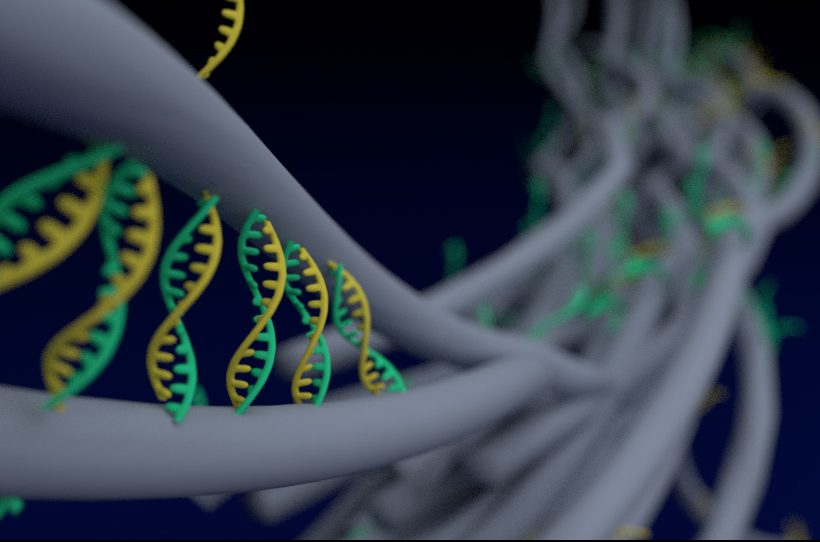Press Release: Dynamic structures
June 11, 2019 – New materials from the lab of UNC researcher Ronit Freeman that can reconfigure on demand have potential for applications in diagnostics, drug delivery and more.
Living things are built by soft materials with intricate structures that can reconfigure in response to changes in their surroundings to carry out important, complex functions. These biological materials, like muscles, bones, or even the “skeleton” inside cells, are made of small units or molecules that organize into larger architectures of various shapes and sizes.
Inspired by nature, researchers from the department of applied physical sciences in the College of Arts & Sciences at the University of North Carolina at Chapel Hill have designed biological building blocks that can organize into dynamic architectures able to reconfigure on demand. The structural design of these molecular building blocks successfully encoded the ability to form an exciting variety of shapes such as fibers, twisted fibers, spheres and bundles that can switch from one structure to the other.
The results were reported on June 3 in the American Chemical Society journal Bioconjugate Chemistry. Ronit Freeman, the corresponding author of the paper, is an associate professor in the department of applied physical sciences.
To generate this material, the Freeman lab harnessed the self-assembly behavior of short peptides and lined them with single-stranded DNA. These peptide-DNA building blocks formed twisted nanoscale fibers in which the degree of twist is controlled by the length of the DNA “hairs.” The twisted fibers transitioned to erical structures when exposed to basic pH. Complementary peptide-DNA blocks were mixed to join the fibers together, forming bundled structures that are highly dynamic and able to disassemble on demand.
Creating adaptable structures made of biological molecular units will kick-start a whole new class of dynamic materials with novel properties and the ability to uniquely interface with cells or organisms. The versatility of the peptide-DNA materials can be used to rationally design structures and functionalities unseen in nature.
Materials that can be programmed to adapt to their biological environment are especially useful for developing soft robotics and triggerable drug delivery systems.
“These building blocks and design space are incredibly rich, and we have only begun to explore what dynamic architectures we can build with them and what functionalities these materials contain within their structure,” said Freeman.
“Particularly appealing is the potential of developing injectable self-assembling medical devices that will reconfigure according to the task in hand, and would replace invasive procedures.”
This work was funded by the department of applied physical sciences at UNC-Chapel Hill. The paper is titled, “Encoding Reversible Hierarchical Structures with Supramolecular Peptide-DNA Materials.”

This graphic depicts peptides assembling into fibers (gray). The attached DNA (yellow and teal helices) on the peptides helps join the fibers together to form bundled structures.

